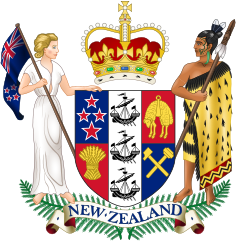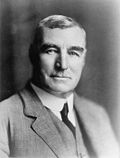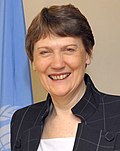History
The first New Zealand foreign minister was James Allen, appointed to the post of Minister of External Affairs by William Massey in 1919. Before this time, there was no dedicated ministerial portfolio for foreign relations. A Department of External Affairs was created in 1919 but its functions were limited to administering New Zealand's Island Territories in the Pacific; namely the Cook Islands, Niue, Tokelau, and the League of Nations Mandate of Samoa. [4] In 1943, a new Department of External Affairs was created to conduct the country's external relations. The older department was then renamed the Department of Island Territories and a separate portfolio called the Minister of Island Territories was subsequently created. [5]
From 1943, the minister of external affairs became the main ministerial portfolio for conducting New Zealand's external relations. [6] Like its similarly named Australian and Canadian counterparts, the portfolio was called "External Affairs" rather than "Foreign Affairs" in deference of the British Government's responsibility for conducting foreign policy on behalf of the British Empire and later the Commonwealth of Nations. [7] The title was changed to Minister of Foreign Affairs in 1970 after the Department was renamed the Ministry of Foreign Affairs. From 1993, the portfolio was merged with the trade portfolio (except for trade negotiations, which were a separate responsibility) as Minister of Foreign Affairs and Trade. In 2005, responsibility for trade was returned to a separate portfolio and the title of "Minister of Foreign Affairs" was restored.
The minister of foreign affairs is usually a senior member of the Cabinet. The portfolio has been held by 13 prime ministers, including Peter Fraser, Walter Nash, Keith Holyoake, David Lange and Mike Moore, [6] and has been assigned to the deputy prime minister on four occasions. Only once has the foreign minister sat outside of Cabinet (Winston Peters between 2005 and 2008).
New Zealand has had 29 foreign ministers (regardless of exact title). The longest-serving was Keith Holyoake, who held the post for the duration of his 11-year premiership. The second longest-serving, and the longest-serving who was not also prime minister, was Don McKinnon, who later became Commonwealth Secretary-General.
This page is based on this
Wikipedia article Text is available under the
CC BY-SA 4.0 license; additional terms may apply.
Images, videos and audio are available under their respective licenses.



































